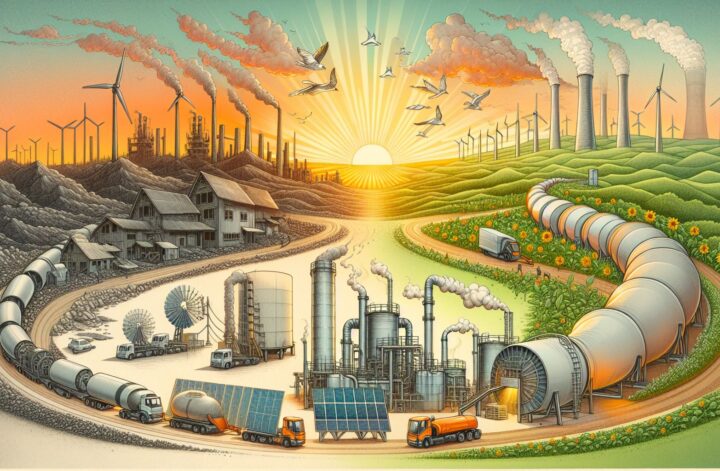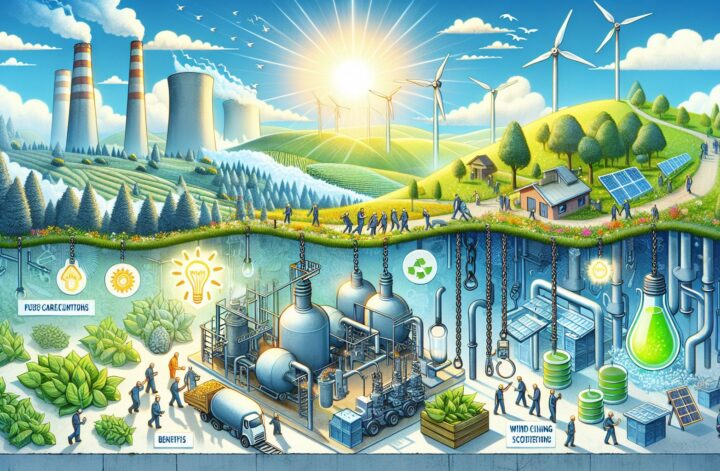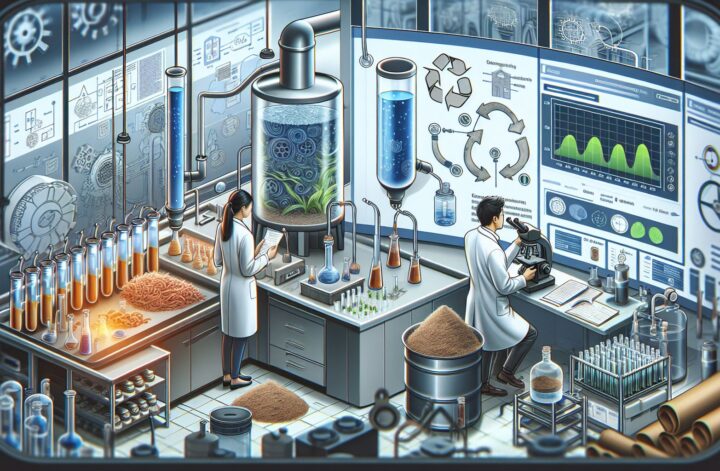In a climate change-stricken world, alternative forms of energy are becoming a crucial aspect of political discussions, environmental initiatives, and economic planning. Among these alternatives, biogas production is a promising player in the global energy market. It converts organic waste products into a valuable energy source and provides a path to waste management and renewable energy.
Introduction
Biogas, a mixture of methane and carbon dioxide, is a product of anaerobic digestion. It works beneath oxygen-free conditions, where bacteria break down organic material. This process yields biogas that can be used as a source of renewable energy generator in various spaces. High-rate anaerobic digestion cordially integrates into urban waste management systems to enhance organic waste treatment [1].
Biogas Production – A Promising Venture
It becomes progressively apparent that biogas production is more than just a scientific curiosity. By leveraging the biochemical process of anaerobic digestion, methane-rich biogas can be used for numerous applications, including electricity and heat generation, transportation fuels, and cooking.
Organic Waste Treatment – Turning Problem into Potential
Advanced anaerobic processes like co-digestion and mesophilic or thermophilic digestion effectively deal with a vast range of organic waste, including agricultural residues and municipal sewage sludge. The process does not merely focus on waste disposal but upgrades the ‘waste’ into the ‘resource,’ adding significant value to society [2].
Renewable Energy Production – The Ultimate Goal
Biogas can be upgraded and refined through processes like biogas scrubbing. Enhanced methane content burns cleaner and more efficiently, allowing it to qualify as a renewable source of energy. Combined heat and power (CHP) systems can utilize this to increase the power efficiency.
The Technical Aspect
Analyzing the production process helps understand the charm behind biogas production. At the core of the process lies a well-designed anaerobic digester that facilitates the microbial activity leading to gas production. Careful adjustments of environmental parameters like hydraulic retention time (HRT), solid retention time (SRT), and organic loading rate (OLR) ensure efficient and consistent biogas production [3].
Chemistry Behind the Curtain
Biogas production involves four crucial stages – hydrolysis, acidogenesis, acetogenesis, and methanogenesis. In these stages, complex organic matter gets broken down into simpler compounds until they finally convert into methane (CH4) and carbon dioxide (CO2).
Role of Microorganisms
A succession of different bacterial dynamics orchestrates this fascinating transformation. Here, it is worth mentioning the existence of syntrophic relationships between different microorganisms, ensuring the smooth running of the entire process.
The Battle Against Toxins
Ammonia and sulfide toxicity have been studied for their potential to inhibit anaerobic digestion. Recent research involving trace element supplementation suggests that these elements enhance the resistance of the microbial community against such toxins.
Beyond the Energy – A Boost to Environmental Equilibrium
Biogas production not only contributes to a sustainable energy industry but also promotes environmental equilibrium by reducing greenhouse gas emissions and supporting substantial organic waste management. The residual material, digestate, serves as an excellent fertilizer, closing the nutrient cycle.
Conclusion
The journey toward a clean and renewable energy future is not a sprint, but a marathon. Biogas production, with its wealth of benefits, presents an excellent avenue for energy, waste management, and environmental sustainability. Through continuous research and development, we can optimize this process, making renewable energy not just an option, but the norm.
References
1. Appels, L., Baeyens, J., Degreve, J., & Dewil, R. (2008). Principles and potential of the anaerobic digestion of waste-activated sludge. Progress in Energy and Combustion Science, 34(6), 755-781.
2. Angelidaki, I., & Sanders, W. (2004). Assessment of the anaerobic biodegradability of macropollutants. Reviews in Environmental Science and Bio/Technology, 3(2), 117-129.
3. Demirel, B., & Scherer, P. (2008). The roles of acetotrophic and hydrogenotrophic methanogens during anaerobic conversion of biomass to methane: a review. Reviews in Environmental Science and Bio/Technology, 7(2), 173




